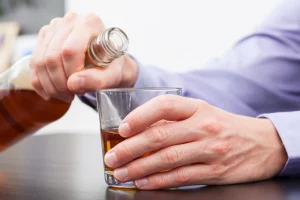
Alcohol addiction and dependence of late has been shown to be affected by the influence of genes. The presence of such genes does not confirm whether a person will turn into an alcohol addict, but there is a high correlation amongst carriers of such genes and alcohol addiction. A blood alcohol level of 0.08, the legal limit for drinking, takes around five and a half hours to leave your system. Alcohol will stay in urine for up to 80 hours and in hair follicles for up to three months. Krystal J et al., The vulnerability to alcohol and substance abuse in individuals diagnosed with schizophrenia.
Food-Related Disorders
Serotonin is another neurotransmitter that is affected by many of the drugs of abuse, including cocaine, amphetamines, LSD and alcohol. Raphe nuclei neurons extend processes to and dump serotonin onto almost the entire brain, as well as the spinal cord. Serotonin plays a role in many brain processes, including regulation of body temperature, sleep, mood, appetite and pain. Problems with the serotonin pathway can cause obsessive-compulsive disorder, anxiety disorders and depression.
National Institute on Alcohol Abuse and Alcoholism (NIAAA)
Several mechanisms could account for such a decrease in brain serotonin levels. For example, the brain cells could produce less serotonin, release less serotonin into the synapse, or take more serotonin back up into the cells. Alternatively, the serotonin metabolite levels in alcoholics could be reduced, because less serotonin alcohol and dopamine is broken down in the brain. To date, the exact mechanisms underlying the changes in serotonin-metabolite levels are still unknown. Neurotransmitter systems may interact to produce the sedative effects of alcohol. An example of such interaction occurs in Purkinje cells, a type of neuron found in the cerebellum.

Pain and reward circuits antagonistically modulate alcohol expectancy to regulate drinking
The economic costs of excessive alcohol consumption in 2006 were estimated at $223.5 billion. Alcohol interferes with the brain’s communication pathways, disrupting the delicate equilibrium of our neurological functions. We experience feelings of happiness as a result of this dopamine spike, and we revel in the feeling of exhilaration, the laughter, and the apparent ease of stress and anxiety. It has been posited by[5] that the negative-affective state induced by alcohol withdrawal and especially the increase in anxiety[6] is a major driving force in the propensity for relapse to alcohol-seeking behavior. The mechanisms involved behind alcohol sensitization, tolerance, withdrawal and dependence are discussed in the following sections. “Intoxication occurs when alcohol intake exceeds your body’s ability to metabolize alcohol and break it down,” explains Amanda Donald, MD, a specialist in addiction medicine at Northwestern Medicine.
What is Opioid Addiction?
Thus, the serotonin-dependent activation of these neurons could reinforce alcohol-drinking behavior. This scenario suggests that serotonin, through its interaction with the dopaminergic system, may play a pivotal role in producing alcohol’s rewarding effects. By studying knockout mice that lack a particular receptor, researchers can assess that receptor’s role in specific aspects of brain functioning and behavior, including responses to alcohol and alcohol consummatory behavior. For example, scientists have studied a strain of knockout mice lacking the 5-HT1B receptor with respect to the effects of acute alcohol exposure (Crabbe et al. 1996). These animals exhibited reduced intoxication in response to a single dose of alcohol compared with normal mice, indicating that 5-HT1B receptor activity produces some of alcohol’s intoxicating effects. Indeed, in rodent models, alcohol abstinence or withdrawal periods are often followed by enhanced rebound alcohol drinking, the alcohol deprivation effect [66].
- To examine D2/3 dopamine autoreceptor function, the D2/3 dopamine receptor agonist, quinpirole (30 nM), was bath applied for 30 min and was followed by application of the D2-like dopamine receptor antagonist sulpiride (2 µM) for 15 min.
- Young males who have experienced a traumatic event can develop lowlevels of MAO‑A expression (an enzyme that breaks down serotonin), and this decrease in MAO‑A levels correlates with an increase in antisocial behaviour, which is a risk factor for alcohol dependence.
- Apart from the dopamine pathways, the addiction to alcohol has also been suggested through the serotonin pathways.
- We are passionate about sharing the process involved in living a drug and alcohol-free life.
The Neuroscience of Addiction – Application to Clinical Practice

Increased 5-HT3 activity results in enhanced GABAergic activity, which, in turn, causes increased inhibition of neurons that receive signals from the GABA-ergic neurons. Consequently, alcohol’s effects on these receptor subtypes also might influence GABAergic https://ecosoberhouse.com/ signal transmission in the brain. The first line of evidence implicating serotonin in the development of alcohol abuse was the discovery of a relationship between alcoholism and the levels of serotonin metabolites in the urine and CSF of human alcoholics.
- This 44 bp deletion occurs 1 kb upstream from the transcription initiation site of the gene.[53] This is depicted through the following diagram [Figure 4].
- Furthermore, the balance of altered dopamine changes and subsequent effects on cellular excitability and fast synaptic transmission in the caudate and putamen will likely dictate the relative behavioral control by the associative and sensorimotor circuits.
- More important, a detailed understanding of alcohol’s mechanism of action in the brain is a prerequisite to discovering effective treatments for both alcohol abuse and alcoholism.

